Many people have a primal fear of snakes. This is related to our survival instinct, as some snakes are venomous or large enough to eat us! Yet snakes also fascinate us, with their sinuous motion and skin-shedding ability.
This explains why snakes symbolize both evil and chaos, as well as fertility, life, and healing. Snakes are mentioned more than 300 times in the Bible. Understanding the symbolism of snakes in the Bible can help us understand this ancient book, as well as our own fears.
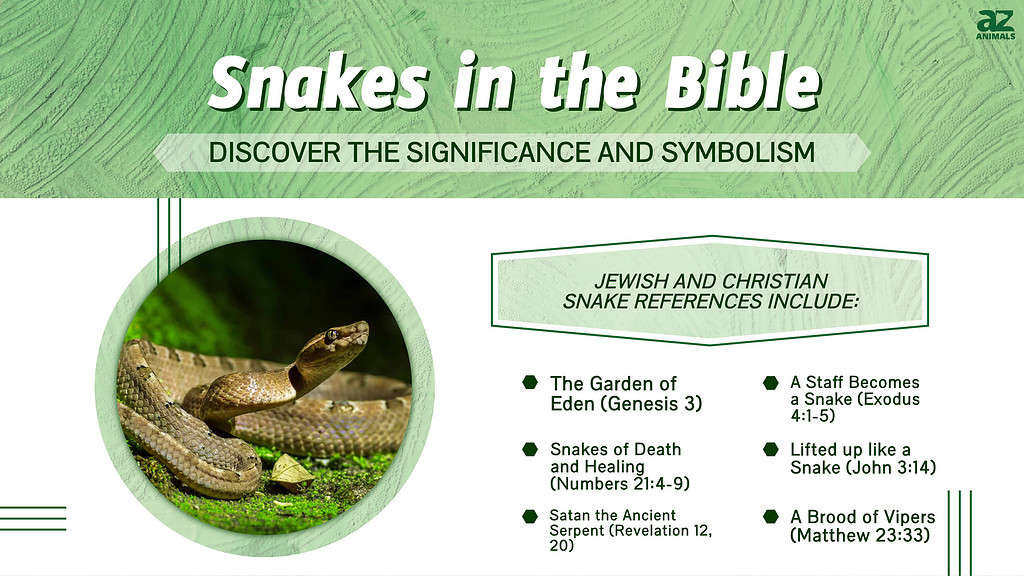
The Setting of the Bible
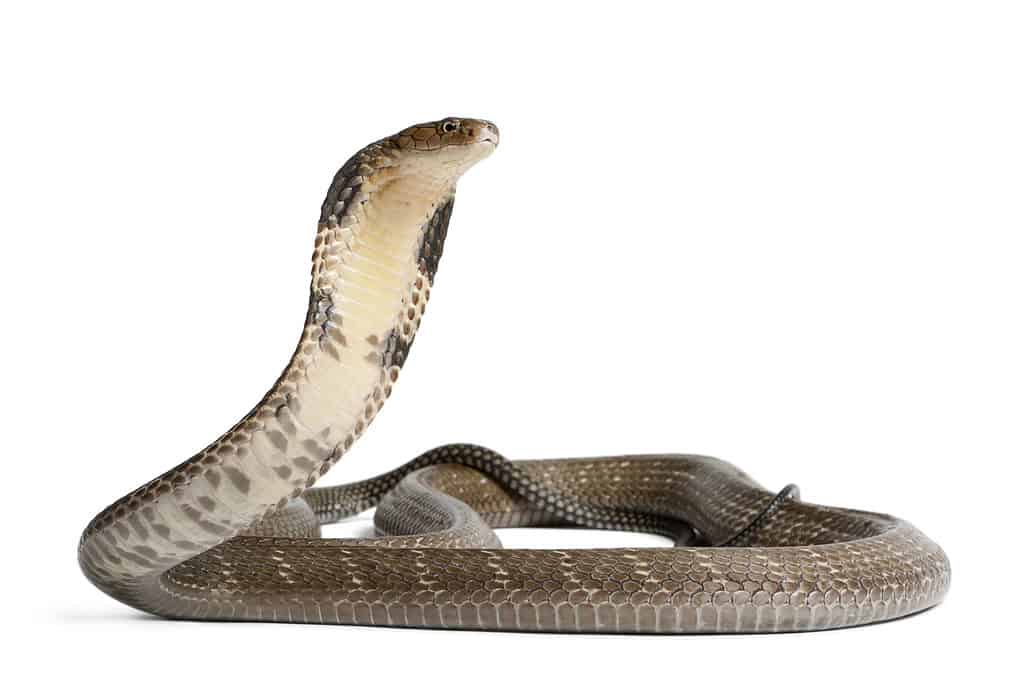
Since antiquity, snakes seem to have a unique ability to inspire a primal fear in human beings.
©Eric Isselee/Shutterstock.com
The Bible consists of books written mainly in Hebrew and Greek, dated by scholars from about 1200 B.C. to A.D. 100. The stories of the Bible take place mainly in Israel. However, significant episodes are set in Egypt, Mesopotamia, Babylon, and Persia as well. These are generally hot and dry regions, with the enormous deserts of the Arabian Peninsula to the south. Israel itself is part of the Fertile Crescent. This agricultural area runs in an arc from the Mediterranean Sea to the Persian Gulf. It covers the territories of Israel, Lebanon, Syria, and Iraq. This region can also be extremely hot. However, it is generally well-watered and hilly or mountainous in places, especially to the north in Turkey and Iran. The region has a lot of different habitats for snakes of various species.

The Middle East is largely hot, dry desert, but is agriculturally productive in the Fertile Crescent.
©iStock.com/Naeblys
Common Snakes of Israel and Egypt
Most of the snake encounters in the Bible take place in Israel and Egypt. What are some of the common species found in those countries today (and presumably in antiquity as well)?
Snakes of Israel
A great many snakes live in Israel. The country has diverse habitats, from arid desert to fertile ranch land to mountains. At least eight species of viper live there, including the desert horned viper, the Arabian horned viper, the Saharan sand viper, the painted saw-scaled viper, Field’s horned viper, the Lebanon viper, the Israeli mole viper, and the Palestine viper. Among dozens of other snake species in Israel are the black whipsnake, javelin sand boa, ten-striped dwarf racer, crowned leafnose snake, dice snake, red whip snake, elegant racer, Sinai racer, Arabian cat snake, and the false cobra.
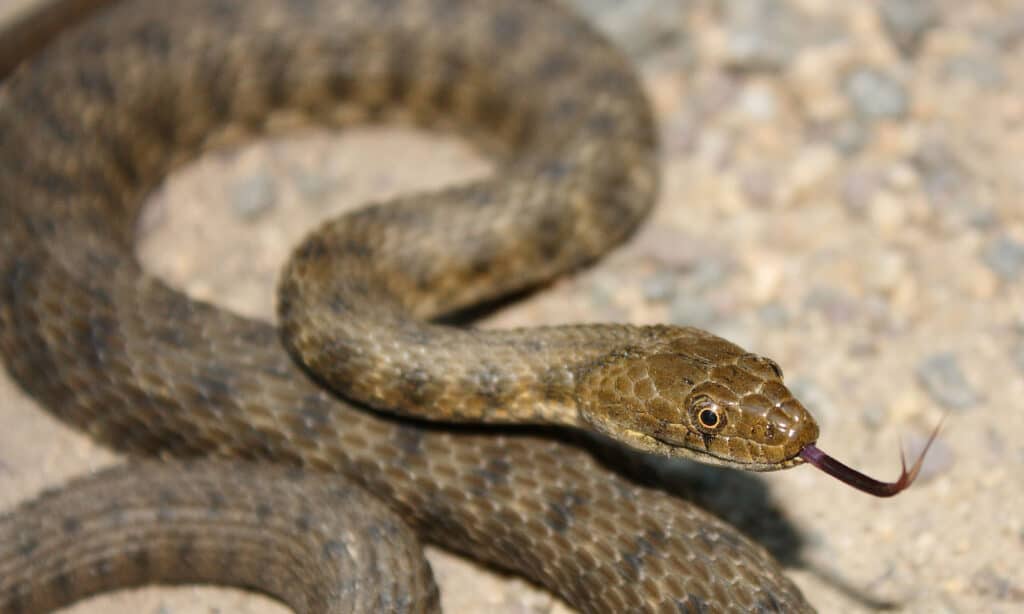
Dice snakes are nonvenomous semiaquatic snakes found in Israel and other parts of Eurasia.
©iStock.com/Zdenek Macat
Snakes of Egypt
There are a large number of Egyptian snake species, many of them venomous. At least five species of viper live in the country: the Saharan horned viper, the Egyptian saw-scaled viper, the Egyptian carpet viper, the Sahara sand viper, and the Field’s horned viper. Three cobra species are the Egyptian cobra, the red spitting cobra, and the black desert cobra. Egypt also hosts the African egg-eating snake and the Egyptian sand boa. The term “asp” was Greek for several species of venomous vipers and cobras in Egypt. It is thought that Cleopatra’s suicide-by-snake was done by placing her hand in a basket with an Egyptian cobra inside.
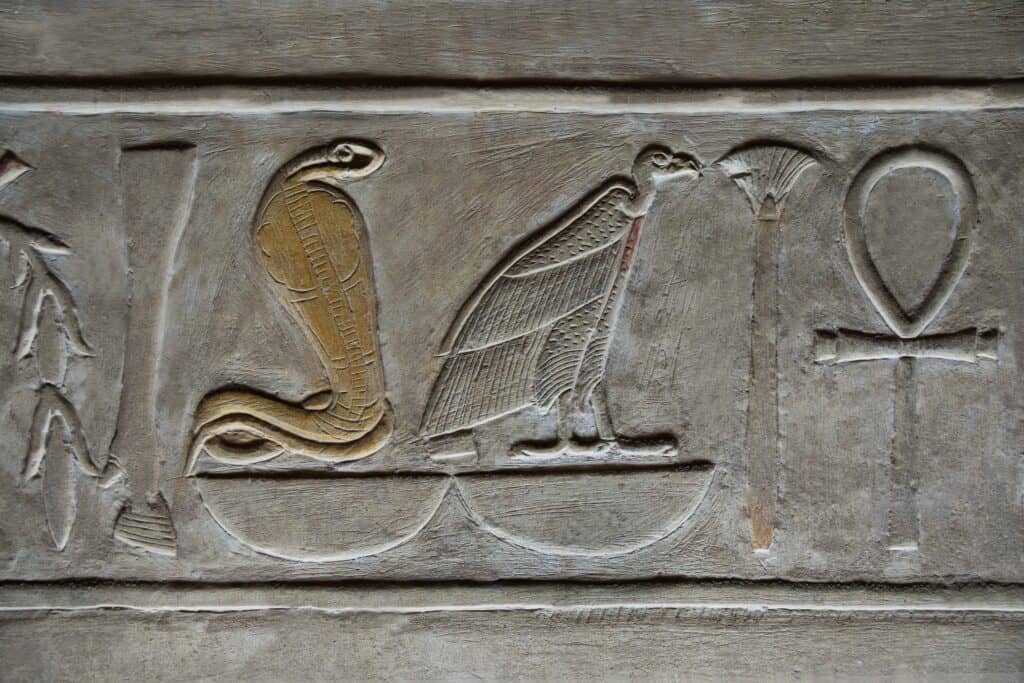
Egyptian cobras were often depicted in hieroglyphics.
©hemro/Shutterstock.com
Snakes in the Jewish Scriptures
These are some of the main references to snakes in the Jewish Scriptures, which are included in the “Old Testament.”
- The Garden of Eden (Genesis 3) – Out of all the animals, the snake was the most “cunning” or devious. A devil-possessed snake talks to Eve, the first human woman. He tempts her to eat fruit from the Tree of Knowledge, which is forbidden. The snake is cursed to crawl on the ground and be in an antagonistic position, ultimately beneath people.
- A Staff Becomes a Snake (Exodus 4:1-5) – When God commissioned Moses to lead the Israelites out of slavery in Egypt, He enables Moses to turn his staff into a snake. The species is not specified. However, Moses ran from it, so it has often been assumed to be a cobra or other venomous species.
- Snakes of Death and Healing (Numbers 21:4-9) – The Israelites complained about their conditions while traversing the Sinai Desert. God punished them by allowing large numbers of them to be bitten by venomous snakes. Moses ordered an image of a snake to be made out of bronze and lifted up on a high pole. Anyone who looked toward this image after being bitten was healed.
- Enemies Were Like Snakes (Jeremiah 51:34) – Israel’s enemies were sometimes compared to treacherous, devouring snakes. An example of this is a reference to Nebuchadnezzar, king of Babylon and conqueror of Israel.
- Snakes in the New Creation (Isaiah 11:8) – A Savior will initiate a new creation, in which animals live in peace with one another. Children will play near venomous cobras and vipers without harm.

The first reference to a snake in the Bible is the one in the Garden of Eden that tempts Eve.
©I Wayan Sumatika/Shutterstock.com
Snakes in the Christian Scriptures
These are the main references to snakes in the “New Testament.”
- A Brood of Vipers (Matthew 23:33) – Jesus was popular with the common people. However, he faced harsh criticism from the religious leaders. These officials continually tried to undermine him and have him arrested. He called them a “brood of vipers” who would be condemned to Hell.
- Be as Shrewd as Snakes (Matthew 10:16) – Jesus warned his disciples of the danger they would face while teaching. He urged them to be as “shrewd as snakes,” while at the same time “gentle as doves.”
- Lifted up like a Snake (John 3:14) – Jesus referenced Moses’ bronze snake on a pole in the desert. He said that in the same way, he would be “lifted up” so that people could be saved through him. In this, he foreshadowed his death on the cross.
- Immune to Snakebite (Acts 28:4-5, Mark 16:18) – The apostle Paul was collecting firewood on the central Mediterranean island of Malta. He was bitten by a venomous snake, but shook it off into the fire and experienced no ill effects. A passage asserts that Christians will not be harmed by venomous snakes. This has been used as validation for practices of Appalachian “snake-handling” churches.
- Satan the Ancient Serpent (Revelation 12, 20) – The last book of the Bible, Revelation, refers to Satan as a serpent. It describes how he was thrown out of Heaven, tried to kill Jesus, and will ultimately be thrown into Hell.
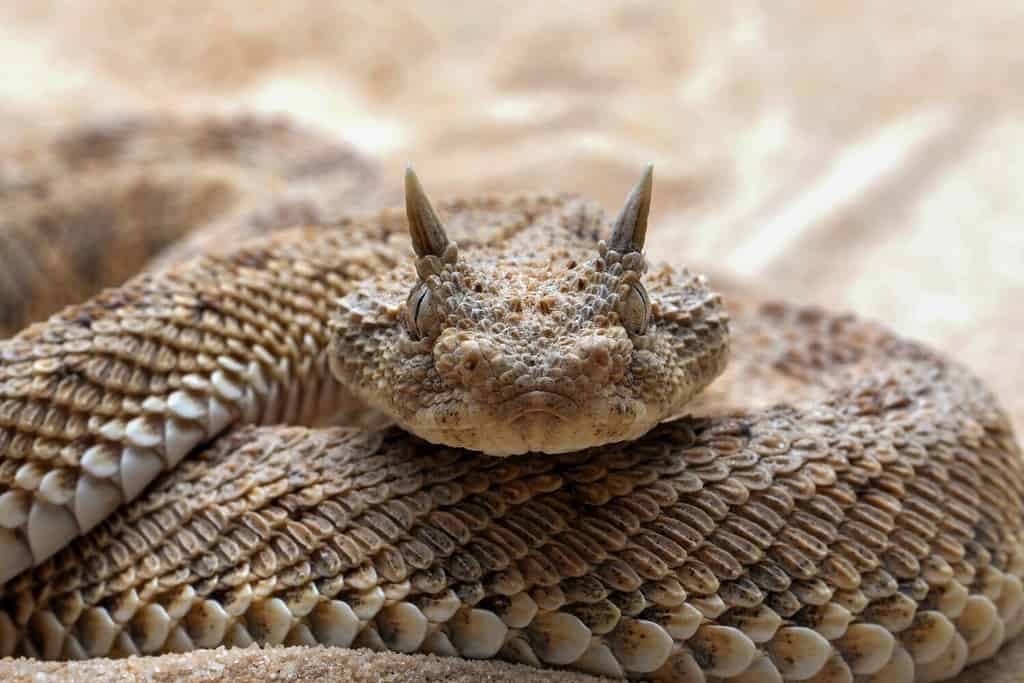
This is the desert horned viper, one of the venomous species indigenous to Israel.
©Lauren Suryanata/Shutterstock.com
Snakes: “Good” or “Bad?”
A common assumption is that the Bible teaches that snakes are “bad.” In fact, the Bible actually teaches that all of the natural world was created by God and was good, but it became corrupted by evil. Satan or the Devil is the powerful leader of a group of fallen angels who act as instigators, tempters, and accusers to try to increase the chaos and misery caused by evil. This includes spiritually possessing and using a snake to confuse and tempt the first people.
Throughout the Bible, snakes are often used in a negative sense, symbolic of punishment, destructive enemies, plotting false teachers, or of the Devil himself. However, we should not overlook that snakes are also used at times as positive symbols in the Bible, as a symbol of healing and salvation, as an example of how to be shrewd when facing opposition, and as a picture of the future reconciliation of man with nature in a new creation where evil will not exist. The Bible’s underlying worldview is that all creatures are good, and man will one day live at peace with them, with one another, and with God.

Isaiah predicts a world of such utter peace and harmony that children will play with cobras and vipers.
©Ixepop/Shutterstock.com
The photo featured at the top of this post is © Kurit afshen/Shutterstock.com
Discover the "Monster" Snake 5X Bigger than an Anaconda
Every day A-Z Animals sends out some of the most incredible facts in the world from our free newsletter. Want to discover the 10 most beautiful snakes in the world, a "snake island" where you're never more than 3 feet from danger, or a "monster" snake 5X larger than an anaconda? Then sign up right now and you'll start receiving our daily newsletter absolutely free.
Thank you for reading! Have some feedback for us? Contact the AZ Animals editorial team.







